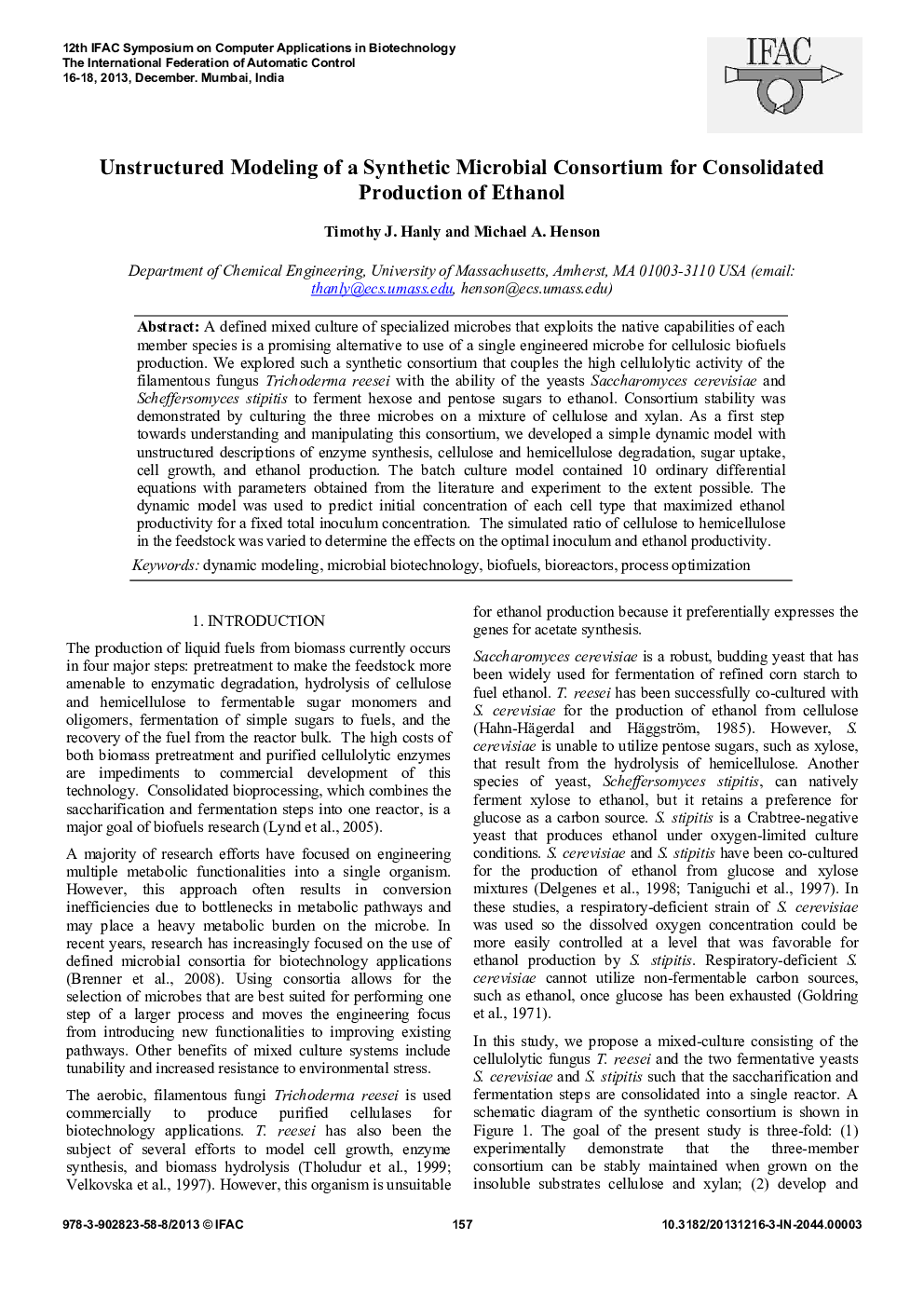| Article ID | Journal | Published Year | Pages | File Type |
|---|---|---|---|---|
| 713965 | IFAC Proceedings Volumes | 2013 | 6 Pages |
A defined mixed culture of specialized microbes that exploits the native capabilities of each member species is a promising alternative to use of a single engineered microbe for cellulosic biofuels production. We explored such a synthetic consortium that couples the high cellulolytic activity of the filamentous fungus Trichoderma reesei with the ability of the yeasts Saccharomyces cerevisiae and Scheffersomyces stipitis to ferment hexose and pentose sugars to ethanol. Consortium stability was demonstrated by culturing the three microbes on a mixture of cellulose and xylan. As a first step towards understanding and manipulating this consortium, we developed a simple dynamic model with unstructured descriptions of enzyme synthesis, cellulose and hemicellulose degradation, sugar uptake, cell growth, and ethanol production. The batch culture model contained 10 ordinary differential equations with parameters obtained from the literature and experiment to the extent possible. The dynamic model was used to predict initial concentration of each cell type that maximized ethanol productivity for a fixed total inoculum concentration. The simulated ratio of cellulose to hemicellulose in the feedstock was varied to determine the effects on the optimal inoculum and ethanol productivity.
